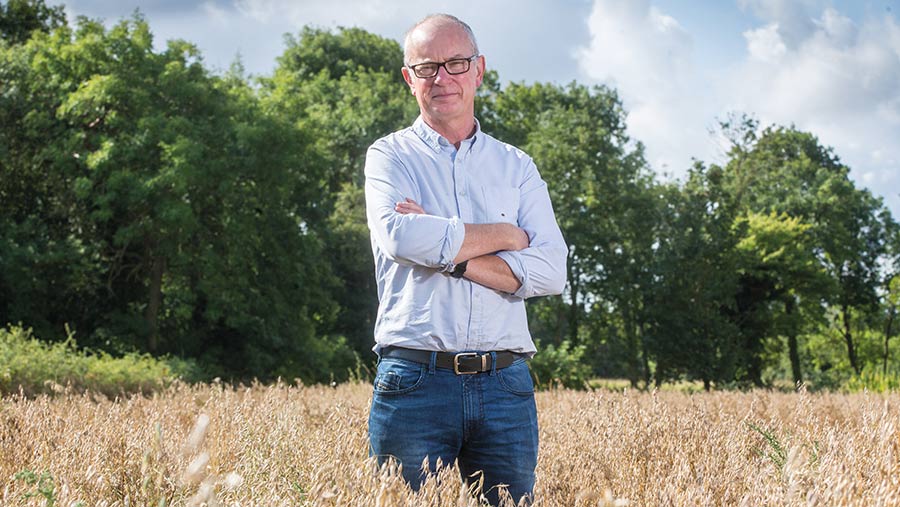Farmer Focus: Hoping for a lodge-free lentil harvest
 John Pawsey © Tim Scrivener
John Pawsey © Tim Scrivener Harvest 2023 is now finished all bar 10ha of lentils, which look like they will be ready at the end of the month.
Like last year, they were grown as a bi-crop with camelina, which is supposed to act as a pea-stick to hold them up for harvest.
Mixed with a healthy crop of thistles aiding architecture, whose seeds are being devoured by linnets and goldfinches (it’s a “land sharing” thing), everything is crossed for a lodge-free lentil harvest.
See also: Wildflower seed diversification gives arable tenants security
In my last submission, we were looking forward to combining some better looking winter crops after a disappointing spring oat and spring barley harvest.
I needn’t have held my breath. Our winter wheat and our wheat/bean bi-crop were 10% down on our 20-year average, although they did look better than that.
There are some clear lessons to be learned. Remedial actions are happening in fields as I write.
Our winter wheat blend is on farm delivered for autumn sowing.
This year we have a three-way mix of Mayflower, Siskin and Extase, almost repeating the mix from last year, except the Illustrious has been dropped as it looked pretty poor.
Our wheat/bean bi-crop is a copy with Vespa beans added.
We’ve also got some Crimson clover to mix in with 40ha of wheat sown for Wildfarmed Grain as a companion crop, which will be sown at the same time as the wheat.
Results from our seed-rate trials confirmed our most profitable target winter wheat is 275 plants/sq m.
However, the wheat/bean bi-crop trial saw 218 plants/sq m of winter wheat and 19 plants/sq m of beans to yield best, delivering a 14% yield increase compared to our usual seed rates.
To achieve that, the seed rate was 383kg/ha, which is pretty eye-watering. We are repeating both trials this year.
Due to our spring crops being a bit thin, the extra light has meant that our under-sown leys have gone down incredibly well and are already flowering and being pestered with bees.
The first wheats of harvest 2026 are going to be barn fillers.


